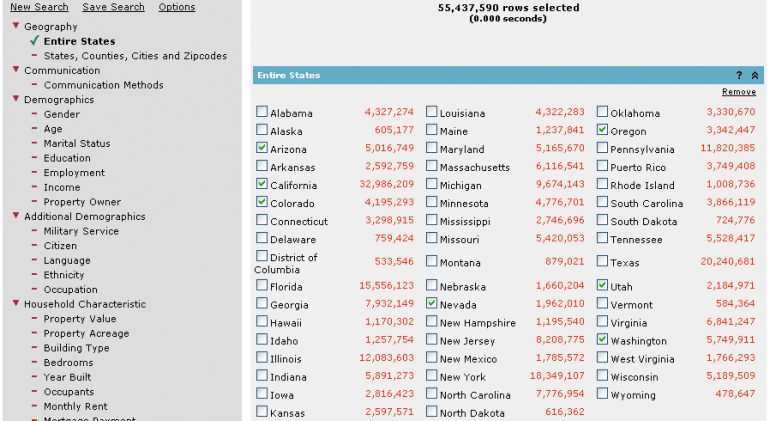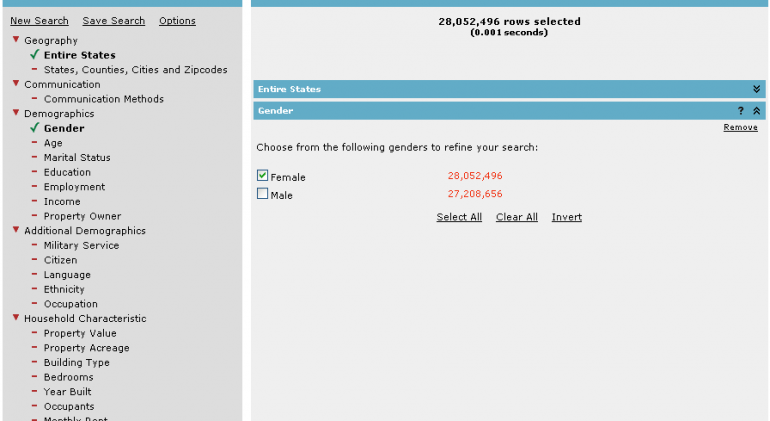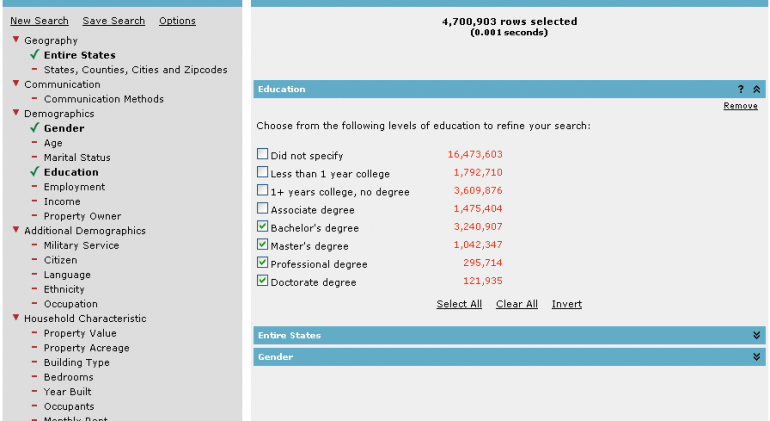Administration: Omnidex Indexing
ActiveCounts
Overview | Example | SQL | Optimization | Tips
Example
Sometimes a picture is worth a thousand words. In this example of ActiveCounts, a web page is allowing a user to qualify a subset of rows from a database for an eventual mailing. This database has nearly 300 million rows … one row for each person in the United States.
Users can choose from any of the columns on the left, and then immediately see the possible values on the right. As they consider their choices, they are informed by the counts for each value. They know the effect of their choice before they even make it. Each time they access the database, the response time is less than one second.
This provides a wholly different experience for the user. The application works the way the user's mind works. The user asks, “What categories of information can I choose from?”, and he sees them on the left. The user asks, “What are the values in the database?”, and he sees them on the right. The user asks, “What will happen if I choose one value over another?”, and he see the counts before him. And it is fast enough to keep him interested and satisfied.
The user starts his search choosing a geographic area of the Western United States.
The user continues his search by looking at Gender. This database contains nearly 300 million rows, but the genders that are displayed represent 55 million rows. This is because the counts reflect the criteria that has already been entered. The genders reflect those counts within the Western United States.
The user continues his search by looking at Education. Again the values and their counts reflect the criteria so far. No choices are shown that don't reflect the Women in the Western United States.
With ActiveCounts, a user can quickly explore the data and isolate the rows that they want to see. The speed of ActiveCounts makes sure that the user does not lose interest or become frustrated. The flexibility of ActiveCounts makes sure that the application provides the user with the results he wants.
Additional Resources
See also:


